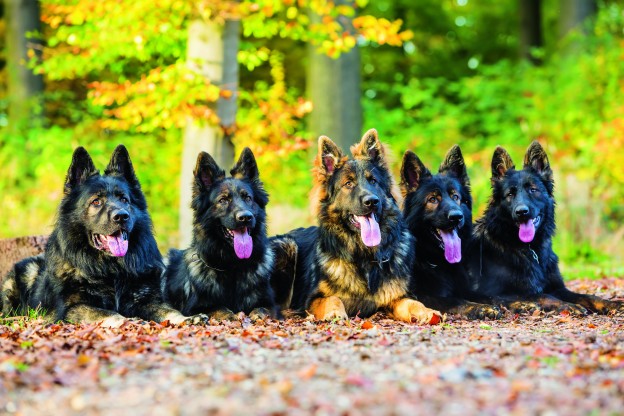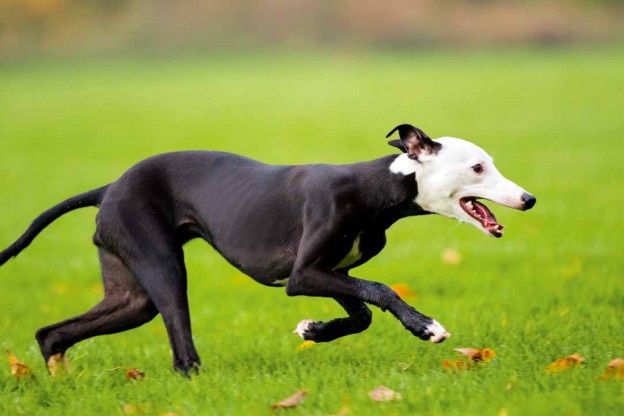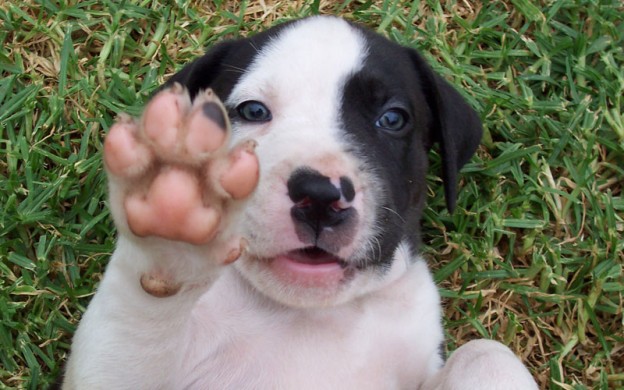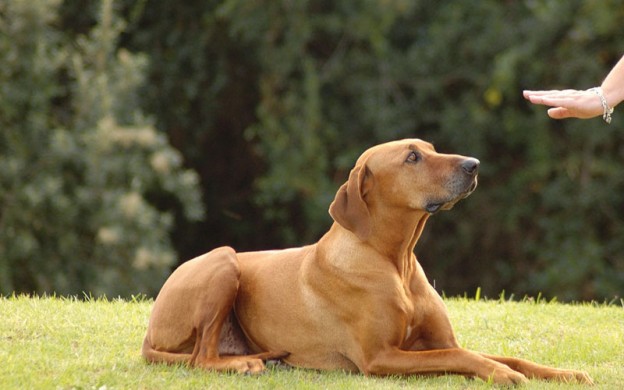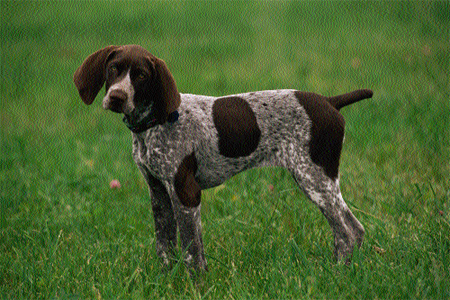
Is it relevant nowadays to say a dog is dominant? Some dog behaviourists say it’s time to move on from dog dominance. Dogs Life looks into the changing trends in terminology relating to our dogs and why some experts believe the word dominant should no longer be used.
There seems to be a general feeling amongst dog enthusiasts that the word Dominance, when referred to dogs, is being incorrectly used. To find out more about this, Dogs Life caught up with a group of passionate behaviourists to find out why the word dominance is no longer acceptable. According to the English dictionary, Dominance means:
- [n] superior development of one side of the body
- [n] the power or right to give orders or make decisions; “he has the authority to issue warrants”; “deputies are given authorisation to make arrests”
- [n] the state that exists when one person or group has power over another; “her apparent dominance of her husband was really her attempt to make him pay attention to her”
In relation to our dogs, however, dominance has taken on a whole new meaning over the past few years. This is mainly due to the changing trends in dog socialisation and training. Gone are the days when punishment or harsh training methods were acceptable. Because of this, the vocabulary once used to describe dogs is also changing.
In the past, people who had a dominant dog would be encouraged to use harsh training methods. Sometimes this even included abusing the dog or isolating the dog from its social pack. As a result, the word still conjures thoughts of abuse or harsh training.
“The terminology has changed because a different view of animal behaviour and the human-animal relationship has become popularised,” says Veterinary Surgeon and Animal Behaviourist Dr Gabrielle Carter (BVSc, Hons, MACVS, animal behaviour). “That is, the terminology has changed in response to a change in our understanding – the paradigm has shifted. There has been a significant critique in recent times of theories around hierarchical social structures, and this has impacted on the use of the term dominance.”
Dr Jacqui Ley, BVSc (Hons), MACVS (Animal Behaviour), who is also an animal behaviour consultant, adds: “We are perhaps in a state of change now which is exciting,” she smiles. “What has changed is the range of language used. We now have people using the ideas of reinforcement, punishment, motivation, and drives. These terms come from learning theory from psychology.”
People also tend to overuse the word dominance and relate all behavioural problems to the dogs position in its pack. This can be confusing, and dangerous, for the owner and the dog. For example, if a person decided that dominance related to harsh training methods and they implemented this on a dog suffering from anxiety, it would be a disaster waiting to happen for the dog and owner. Basically this would make the behavioural problem much worse.
“The word dominance has different meanings to different people,” says Dr Judith Randall (BVSc, MRCVS, MACVSc [animal behaviour]). “There appears to be a tendency for people to use the word dominance to describe many different behaviours, which have no connection. There also appears to be a tendency for many dog owners to interpret dominance as the need to intimidate their dogs. Therefore, in my opinion, the word should be used with great care.”
Where did it come from?
So why was the word used in the first place to describe a dogs behaviour? Here we can relate back to the changing trends of dog ownership. Thankfully, gone are the days when dogs were used only for purposes other than companionship. Today, our dogs are welcomed as part of the family, therefore the use of harsh punishment training has been replaced with motivational praise training. We no longer wish to dominate our dogs; rather, we strive to become good leaders and provide our dogs with understanding and training.
“There is no place for abuse in dog training,” says animal behaviourist Dr Debbie Calnon (BSc BVMS MACVSc, animal behaviour). “In the past, the concept of dominance has been used as an excuse to physically or mentally abuse dogs. This could take the form of inappropriate physical reprimands or prolonged periods of social isolation. Our current level of knowledge indicates that these methods are not only unethical, but also far less effective than humane methods based on sound scientific principles.”
It was also very interesting to learn where the word dominance in relation to dogs actually came from. Believe it or not, it was derived from research into the relationships of chickens! The first studies into social status and the hierarchies of a certain group of birds were conducted back in the 1920s on a group of chickens. Here it was discovered that the more dominant chickens had access to the best food and nesting sites. Hence the reason is it is called a pecking order, as the chickens would peck as a means of establishing rank.
“The original observations were on chickens, and resulted in identifying a pecking order amongst a particular group of birds in a particular context,” explains Dr Cater. “This hierarchical concept of social structure was then applied to a completely different species wolves, and from here it has been applied to a completely different situation again the domestic dog. To assume that chickens and wolves operate the same way seems dubious and I propose even more so, to compare wolves to domestic dogs. I would not dispute that dogs are social animals by nature, but this does not imply an innate social structure. Humans are social by nature but many variant, culturally different social structures exist. This is because any behaviour (including social behaviour) is influenced by genetics, learning and the environment.”
When you discover where the word dominance originated from, using the word to describe dogs living in this modern world really doesn’t make sense. However, this isnt to say that trainers or professionals in the industry, who are continuing to use the word dominant to describe a dog, intend to hurt or peck the dog into order. Many of these people have just derived a different meaning from the word. There are lots of proud dog guardians who most certainly own challenging pooches, but this isnt to say they are dominant or that harsh training methods should be used.
Some dogs are more confident and trainable than others, just as some dogs are very affectionate while others would rather have a run in the park. But for the ongoing improvement of our dogs lives, words such as dominant should be replaced with more appropriate words such as challenging.
“Social position is important to dogs, but most dogs are content with a stable, consistent social structure,” Dr Jacqui Ley states. “Dogs that challenge for social position or really believe they occupy the alpha position are different from normal dogs. Their owners need to seek professional advice, preferably from a veterinary behaviourist, to ensure the dog is managed in a safe and humane manner.”
More importantly, people shouldn’t be diagnosing their dogs problems themselves! With so many wonderful professionals around, leaving it up to the experts is always best when determining a dog behaviour problem. Then you are free to examine all the solutions available to you and your dog, rather than misdiagnosing and accelerating the problem.
“Dog owners should look for a trainer or behaviourist who will help them to understand their dogs behaviour and help them work with their dog, rather than dominating their dog,” Dr Debbie Calnon advises. “Training methods that are built on the owner providing direction for their dog in an atmosphere of trust and mutual respect is ideal. The owner should set clear rules and boundaries in a non-threatening manner. The resulting safe and secure environment will allow the best learning environment for the dog.”
The importance of good leadership
Being a good leader to your dog is vitally important. However, good leaders are not aggressive or harsh. A good leader should be able to show their dog in a healthy and gentle way the correct way to behave in a human household without the use of force or intimidation which can sometimes be interpreted as being dominant. Through the use of positive motivational training, good leaders are able to provide their dogs with the correct knowledge and obedience levels.
Dr Judith Randall agrees. “People need to try to empathise with their dogs rather than categorise them,” she says. “When an owner has a problem with a dog, then they need to try to understand why their dog is behaving like this. Is it because it has never been taught any other way? Is it confused or anxious? As leaders, we need to show them compassion and understanding.
We need to be fair and to give good guidance, not intimidation. Dogs frequently have anxiety problems. No amount of domination is going to help this.”
Dr Jacqui Ley adds, “A better way of describing the ideal relationship between dogs and people is for people to consider themselves as leaders and to look at the rights and responsibilities of being a leader. Leaders have the right to expect to be obeyed when they ask a reasonable request, to set the agenda, to reward appropriate behaviour and to punish inappropriate behaviour, and to be trusted.
They have the responsibility to keep their dogs safe, protect their dogs from themselves and others, to see that their dogs know what to expect and how to behave, remember that their dogs can only behave within their capabilities, and to be trustworthy. These two concepts work together to provide checks and balances in the dog-human relationship. While a person can expect a dog to obey a command, the dog must have first been taught the command and it must be within the capabilities of the dog.”



